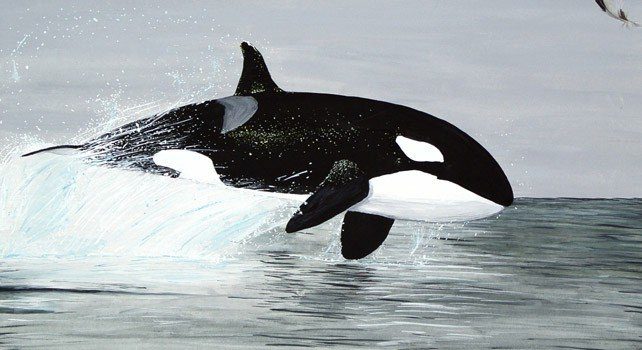If you love these marine mammals, then you’ll love these most interesting facts about whales, from their sizes to breeding habits.
Whales are a common name for marine mammals.
The term ‘whale’ often excludes dolphins and porpoises.
Toothed whales have small teeth, which are primarily used for hunting. Examples of these whales include beluga, orca (also known as the ‘killer’), and sperm.
Filter feeders have baleens that filter plankton. Examples of these whales include blue, humpback, and minke.
Whales are part of the ‘cetacea’ family as they have fins, flukes, and blowholes.
The largest whale in the world was the blue whale at 30 meters and over 180 tonnes, whereas the smallest was the pygmy sperm whale at 3.5m.
Whales have been hunted for their meat, bones, and for medicinal purposes.
Due to the practice of whaling, most species are now endangered.
The hippopotamus is the whale’s closest living relative.
Whales are descended from the Artiodactyl species of dinosaurs, which were land dwellers.
They are warm-blooded creatures.
Their blubber stores energy and insulates the body, keeping them alive through harsh winters.
Baleen whales have two blowholes, whereas toothed whales have only one.
Male whales are called ‘bulls,’ females are known as ‘cows,’ and newborns are called ‘calves.’
Most cows give birth to one single calf, which is born tail first to help minimize drowning.
Calves can reach maturity between 7 – 10 years.
Whales live in families, known as pods.
Only one hemisphere of a whale’s brain is asleep at one time.
Scientists believe that whales are capable of teaching, learning, cooperating with others, scheming, and grieving. This was believed after studies found their cells similar to the human cells associated with social interactions.
Breaching or cresting the surface of the ocean can be seen as signs of courting, danger, dominance, and play.
Killer whales spyhop in the water using their buoyancy. This is due to their inquisitive nature.
When a whale slaps its fluke (tail) against the water, this is to scare smaller fish, as it forages for food.
Whales communicate through a series of “songs.” Dory, in the animated film Finding Nemo, believed she could speak whale.
Whale watching is a popular tourist pastime, in which groups are taken onto the ocean in a large boat to witness the mammals’ behavior and antics.
Whales feature heavily in religion and mythology. The most famous is Jonas, who was eaten by a whale.
Moby Dick (from the novel of the same name) and Monstro (from Disney’s Pinocchio) are the most feared whales of fiction.
There are many famous films depicting whales, including Big Miracle, the Free Willy franchise, Moby Dick, Pinocchio, and Whale Rider.
Injured whales are often taken into captivity to survive. However, some are so used to their new lifestyles that they cannot become part of the pod once more, resulting usually in their deaths.
Whales in captivity are often used for shows, such as at Sea World in Orlando, Florida. These shows heavily feature killer whales, which take part in demonstrations and are rewarded for their efforts.
The most famous killer whales are:
a. Keiko, the famed star of the Free Willy franchise, who was released into the wild, and died upon beaching himself.
b. Springer, the only whale in history to successfully join her pod after human interaction.
c. Shamu, the first killer whale to survive more than 13 months in captivity and performances. She was retired after she grabbed and refused to release one of her handlers.
d. Lolita, a killer whale who spent 40 years at the Miami Seaquarium. She was a great star and after attracting attention many hoped that she would be freed of her living conditions and released.
e. Tilikum, a performing killer whale at Sea World. He has been involved in three human incidents resulting in the death of two female trainers and a hypothermic intruder. Tommy Lee of the rock group Mötley Crüe has often petitioned for the release of Tilikum after accusations were made regarding the whale’s sperm donation and human contact.

















